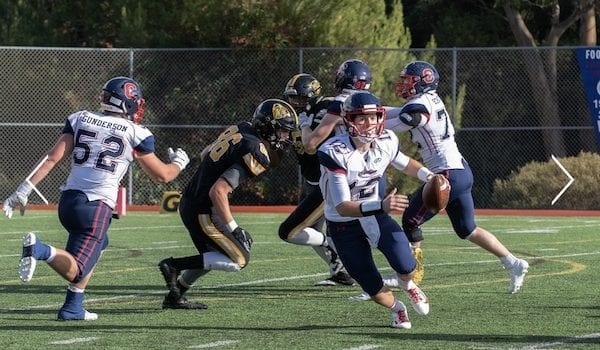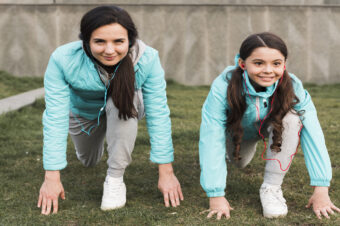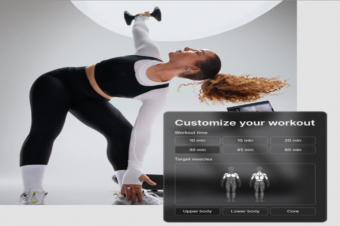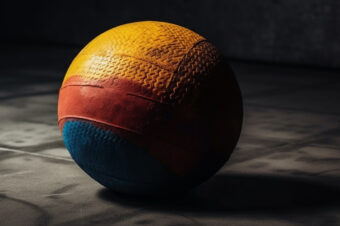

The 3 “Do’s” and “Don’ts” of Low Back Pain
BlogHigh School FootballLEVELUP INSIDERS July 16, 2019 Chris Corrales 0

Back Pain Ends with this Defensive End
Back pain is the most common reason for doctor visits and athletes are even more susceptible. Bishop O’Dowd’s 2020 tight end/defensive end, Colton Vardell, who has had recent offers by the New Mexico Lobos and USD, knows the short term benefits and long term advantages of taking care of his back.
An Epidemic
Low Back Pain (LBP) is the single reason for most doctor visits. Globally, it is the leading cause for most years lived with disability. In America alone, it is a $50 billion dollar industry. Three main factors keep sufferers of LBP from getting better:
-
Professionals disagree on how to treat it
-
Ulterior financial interests by pharmaceuticals and other companies, and
-
Outdated understandings held by both professionals and the public about how pain works, how to think about pain, and what treatments are most and least successful.
The Big 3: What Not to do
Because most of us aren’t in the business of pain we aren’t up on the latest info. The problem is that even most professionals aren’t applying the latest science. Here are my top three picks that you should know not to do if you experience a bout of low back pain, according to the latest science.
-
Don’t stress out (that it’s going to last forever), it won’t. Yes, most of us will be victims of LBP some time in our lives, and yes for some it will recur. But, if it’s not a serious health issue, it is usually a self-limiting experience. Yes, there are ways to reduce its intensity, frequency, and duration so my first advice is don’t stress. Science tells us fear and anxiety actually increase pain. Updated professionals will take care of their words to use positive language and not push the situation towards diagnoses/ideas or traditional yet harmful treatments, to begin with.
-
Don’t think LBP isn’t serious, it very well can be, but rarely. Here’s a shortlist of things to take very seriously:
-
True numbness around the “saddle” area (groin, buttocks, and inner thigh areas), this might mean that you can’t feel light touch, for instance, the numbness your mouth feels like from a dental visit.
-
Incontinence. That is a loss of bladder and/or bowel control.
-
Low back pain when you’ve been in a severe accident such as in a motor vehicle accident.
-
The probability of LBP being from spinal (infection, compression fracture, stress fracture) ankylosing spondylitis, cauda equina syndrome, cancer or aneurysm is quite low compared to the number of cases of back pain there are, but they are important to be seen by an up to date professional about.
-
Don’t jump to heroic measures like opioids, steroids, or surgery too quick. An article in the World Health Organization’s Bulletin listed key similarities of 6 countries which basically suggested that in most cases using non-invasive measures are better than invasive ones.
The Empowered 3: What to do.
Primitive pain advice for common musculoskeletal pain is, “Don’t move.” Today’s perspective is very different. Movement is the miracle medicine. Time magazine came out with a whole edition on movement, exercise is good, but it’s only an aspect of better movement. Stretching is also only an aspect of movement. The movement culture has begun, but we haven’t fleshed it out completely so it’s not understood fully. As we lead more athletic and movement centered lives we’re going to need to understand movement, but in particular micro-therapeutic movements, as our injuries and chronic pains increase. Here are my top 3 general pieces of advice on LBP.
-
Welcome what common sense wants you to avoid. Sounds crazy, right!? If you automatically define the sensation you feel as pain, your brain only has one way to go: tense and protect. Gather data by being an unbiased objective observer of sensations that arise as you curiously explore various movements. Doing that will inform you of what’s easy and pain-free and what’s difficult. It will also help you to be connected to the experience rather than disconnected and avoiding it. You might call avoidance fear. Choice has the potential to change everything. Be careful of choosing rest and stillness unless they’re really called for.
-
Do the opposite. The idea behind Counter Movement is to teach your brain and body to be able to function the same in two opposing directions. For instance, for me, doing a forward bend is much easier than a backward bend. Going forward I can touch my toes, going backward, if I could touch my heels going backwards, that’d be amazing! Simple bio-mechanics makes that near impossible, but you get the point. The difference I experience between forward and backbends is that backwards I have hang-ups and limitations just past vertical alignment. That’s too soon intot the bend. It’s healthy to visit your limitations often.
-
Know nociception, no pain. No nociception, know pain. The first thing we should learn about pain is what’s called nociception. Nociception and nocebo have the same root. A basic, but not perfect example is that a nocebo is the opposite a placebo. A positive input will produce a positive effect, that’s a placebo, and a negative input will produce a negative one, nocebo. I used to wake up with back pain and what I was taught culturally was to say, “Oh man, I’m getting old. My back is horrible!” When I changed up and started to say, “I’m young and my body is adaptable” the discomfort had a much shorter life. Nocebo’s can come in many forms.
From Widespread to Educated
As an athlete you’re on the front lines of creating change, even if it’s just within yourself. Back pain may remain as prevalent as it always has, but our relationship to it can create a 180-degree shift. My sister-in-law who is a midwife said something profound, “Childbirth isn’t painful, it’s simply an intense experience.” And a nurse I know who works in Labor and Delivery once said, “On the night shift, it doesn’t matter if mom comes in saying, “I’m gonna have a natural birth.” “I can still tell who I’ll see in surgery for a c-section in the morning, they are the mom’s who are afraid of the process.”
Play, live, move, but don’t succumb to pain!
Chris Corrales









No comments so far.
Be first to leave comment below.